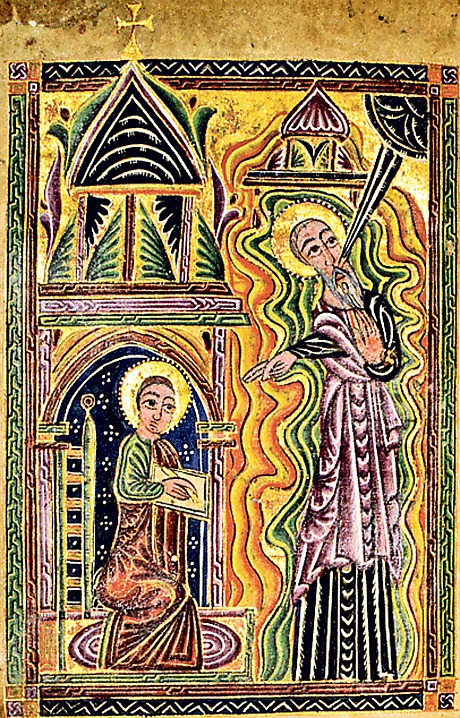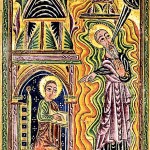Coruscating image Of An Unfamiliar tradition
on the Bodleian in Oxford, a hundred objects tell the story of Armenia’s conquer exile, invasion and worse

the picture is of St John the Evangelist, and the word of God is descending to his mouth from heaven above. One hand is raised in prayer, the other pointing, with fingers within the place of blessing, in opposition to his scribe, conventionally named Prochorus, who is faithfully writing down the phrases from his lips.
The Evangelist’s head is surrounded by means of a golden halo, as we’d are expecting, however his complete body is enclosed in a shimmering nimbus, as though he had been electrified. Above him is a dignified dome, of suitably exotic appearance to English eyes, for this can be a manuscript illumination painted by using an Armenian in New Julfa, adjoining the city of Isfahan in the midst of Iran.
that is one in all one hundred objects on express in Oxford in the Bodleian Library’s new exhibition room subsequent to Blackwell’s in the large. The objects inform the story of Armenia, and the exhibit’s subtitle is Masterpieces from a permanent culture. Armenians have been via rather a lot and survived, because of the closeness with which they embody their language, faith and households.
I used to be lucky sufficient to be shown round by means of the earnest but humorous Professor of Armenian research, Theo Maarten van Lint, its co-curator. Stupendously learned, and at house with medieval cursive Armenian (in its horny alphabet of 36 letters invented in advert 405), he certainly loves all issues Armenian. but the story informed by using objects calls for no previous information.
The book of Gospels with the glowing picture of St John was copied in New Julfa because it was to there that in 1604 the Persian ruler Shah Abbas deported a few hundred thousand Armenians, from the wide valley beneath Mount Ararat. It used to be no longer the primary or worst catastrophe for the nation.
So it is shocking how open Armenians remained to outside cultural influences. steadily, a group afflicted by way of antagonistic forces clams up and becomes a closed sect. The Armenians soon made New Julfa a thriving hub, trading diamonds, silk and different treasured items between some distance Asia, Africa and Europe. they’d buying and selling colonies in Lvov, Moldavia, the Crimea, Russia and Constantinople – an Armenian cultural capital in the 18th century.
rich merchants was patrons of the production of religious manuscripts, as had previously been the great households, the naxarar, who held strongly independent sway in the mountainous panorama of Armenia.
in one aspect, Armenians did define themselves in opposition to different Christian peoples, for in 451 that they had no longer sent bishops to the Council of Chalcedon, which hammered out formulae of orthodox perception about Jesus Christ. From then on the Apostolic Church of Armenia resisted attempts by way of the Catholics to carry it into their sheepfold. A novel Akabi (1851), written in Turkish with Armenian script, is a love story about an Apostolic and Catholic Armenian.Misunderstandings from Chalcedon had been untangled via Karekin I, Catholicos of all Armenians, and Pope John Paul II in 1996. This yr (Sacred Mysteries, February 28), Gregory of Narek (951-1003), the good saint of Armenia, was once declared a doctor of the universal Church by way of Pope Francis.
one of the poignant objects within the exhibition is an 18th-century reproduction of Gregory’s well-known e book of Lamentation (which Prof van Lint says bears affinities with John Donne). It used to be kept within the home as a sort of signal of the saint’s abiding presence. Wrapped in textile devoutly, this e book was once a place for little card holy photos, and (gathered ahead of the household used to be driven out throughout the Ottoman genocide of 1915) a tiny material knot containing earth from the fatherland of Armenia.
at the Bodleian in Oxford, a hundred objects tell the story of Armenia’s triumph over exile, invasion and worse
Telegraph Columnists: day-to-day opinion, editorials and columns from our megastar writers
(56)







